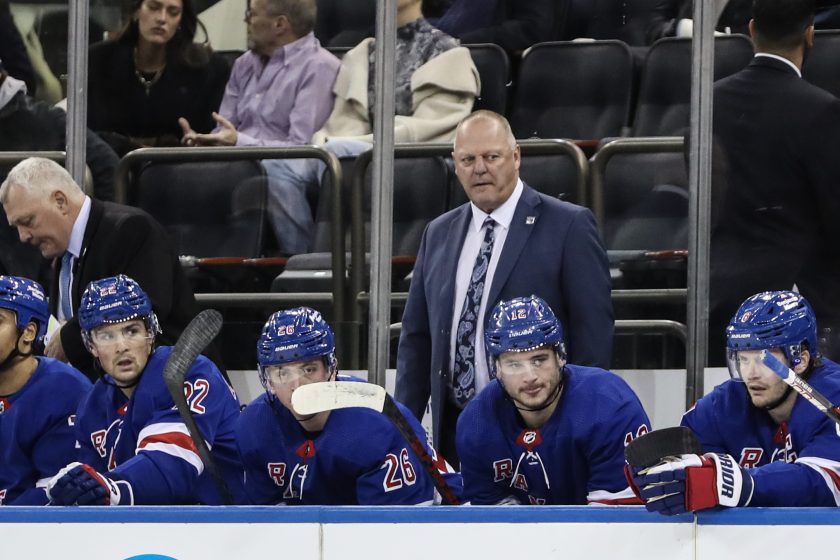The New York Rangers’ best Brady Skjei strategy is patience

For the New York Rangers, patience is the key with scuffling defenseman Brady Skjei, as the team attempts to turn the corner.
The New York Rangers have acquired some very good defensive prospects as the rebuild rages forward. Nils Lundkvist has been playing excellent hockey in Sweden, while K’Andre Miller is progressing nicely with the University of Wisconsin.
Adam Fox has not missed a beat in his transition from Harvard to the NHL, and both Joey Keane and Zac Jones have shown flashes of potential as mid-round steals.
Not all of the kids have been turning out gems, of course. Brady Skjei continues to frustrate Rangerstown.
Frustration with the talented blueliner is certainly understandable and his contract will force the Rangers to decide whether they should trade him or commit to him for the duration of his deal. While both are intriguing options, the team should opt to be patient with Skjei and keep him despite his ongoing struggles.
Skjei’s first full season in 2016-17 produced exceptional production. He collected a career-high 39 points and was a key player for a Rangers team that qualified for the Stanley Cup Playoffs, the organization’s last appearance in the grueling extra season.
Since then, however, the rails have come off for Skjei, who has struggled over his last two seasons. He has struggled immensely since his second season and has thus far failed to live up to the six-year contract that the team signed him to.
He’s struggled both traditionally, producing a -30 since the start of the 2017-18 season, as well as falling short in many advanced metric categories. After producing 14.4 goals above replacement (GAR) in 2016-17, he has put up a -4.4 rate since then (via Evolving Wild).
The 25-year-old’s sudden struggles would be difficult to explain under normal circumstances, as young players don’t often go from very good to very bad at random. While there is no definite proof of his struggles, there was one major change that was made during the summer between his excellent rookie season and the rest of his career.
The team added a new assistant coach by the name of Lindy Ruff, who had been fired by the Dallas Stars previously that summer. Ruff, who was a holdover when the team moved from Alain Vigneault to David Quinn, has been the primary defensive coach since his hiring.
The year before Ruff was hired, the Rangers allowed 216 goals, while they have allowed 263 and 267 goals in the two full seasons since Ruff has been hired, and are on pace to allow 264 goals this season.
In case the spike in goals allowed wasn’t enough, there are also many cases of players improving after leaving the team (Ryan McDonagh, Neal Pionk), declining upon arrival (Jacob Trouba), or both declining upon arrival and improving after leaving (Kevin Shattenkirk). It makes a convincing case that there are major system issues in place.
It’s hard to envision the Rangers keeping Ruff around much longer with the team’s persisting defensive issues that mostly began with his tenure. The team should thus refrain from dealing Skjei for pennies on the dollar until they see what he can do with a different defensive structure in place.
Firing Ruff might not be a cure-all for Skjei, as he has oftentimes made poor decisions with the puck and when defending against the rush. While Ruff’s scheme cant be directly blamed for Skjei’s mental lapses, they can be a contributing factor.
If Skjei is playing with little confidence due to his struggles, which are mostly due to Ruff’s system, it can lead to him making poor decisions with the puck as he could either be lacking confidence or trying to do too much when he can control the play.
There’s no guarantee that that is the case, but it’s certainly a more likely to be so than it is that a player who was lauded for his good decision making during his rookie season suddenly forgetting how to play hockey for no real reason.
Skjei might not improve away from Ruff, but all of the evidence suggests that he will. The Rangers should keep him in blue in order to be the beneficiaries of those improvements.
I'm a student at Binghamton University. I'm a huge fan of the Mets, Rangers, Giants, and Jets, and will be covering them for the site, as well as fantasy hockey, football, and baseball. My twitter is @wmcine






